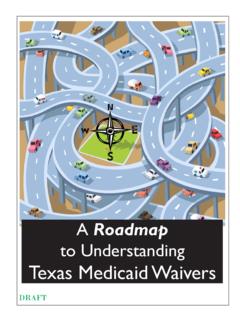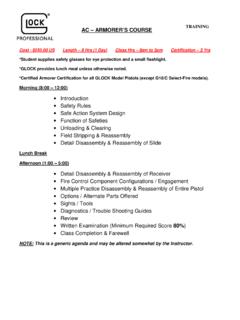Transcription of CUSTOMER ISSUE RESOLUTION …
1 CUSTOMER ISSUE RESOLUTION PROCESS SCRIPTING GUIDELINES Whether you are the one receiving the complaint, or the one being assigned the complaint, the steps and messages are still the six A s as a formula for ISSUE RESOLUTION success. 1. Acknowledge identify yourself (if the CUSTOMER doesn t know you), and acknowledge the validity of the CUSTOMER s complaint whether you agree or not is the CUSTOMER has a complaint, whether real or perceived, it is to be treated as a valid complaint. (Note: If you have been assigned the complaint, it is important to start the call by indicating that you have been requested by ____ to follow-up with them regarding their concern about ____.) Tips a. Do not personalize the ISSUE . b. Listen carefully and respectfully.
2 Do not interrupt. If the ISSUE is being presented loudly, ask if you can move to a quieter place to learn more or make sure you use normal or soft volume as a counter action. c. Verify that the ISSUE is important to you. d. Do your best to drop what you are doing to listen immediately. If you cannot because you are providing patient care, reinforce the importance of the ISSUE to you and indicate that you will be in touch as soon as you are finished providing care to the patient. Ask them how they would prefer to be reached. e. Thank the CUSTOMER for bringing the ISSUE to your attention. If he/she is taking 5 minutes from their busy schedule, it s obviously important to them. f. Always remember that they are your CUSTOMER and that you want his/her experience to be the best that it can be.
3 G. Project sincerity in your response. Maintain eye contact, keep your voice steady, do not become emotional about the ISSUE . If you get emotional and rattled, your credibility is weakened. h. Do not argue with the CUSTOMER or try to explain why they are wrong in their perception. While they may be wrong, when they are angry is not the time to point that out. Instead, take the ISSUE and then go back later to explain. Or, if their perception is wrong because of unclear expectations on the part of the organization, use the CUSTOMER s interpretation as a way to check your process for flaws. 2. Apologize do not take the blame or assign, but apologize on behalf of the organization for the inconvenience caused Tips: a. Remember that apologizing is not taking blame, it s a means of acknowledging that their ISSUE is valid.
4 B. Use the apology as an opportunity to acknowledge that the ISSUE concerns you as well. c. Be careful not to assign blame or pass the buck ..never say, it s not my fault , the other department always messes up , I m frustrated that I haven t been able to fix that problem either , and the like. The CUSTOMER is looking for someone to help him/her to solve the for someone with whom to commiserate. It is also not helpful to sabotage your own organization nor professional. 1 3. Ask be certain that you understand the ISSUE . Answer questions, ask the CUSTOMER for the details so that you have the information that you need to resolve the ISSUE for him/her. Restate your understanding. Gain their agreement on your understanding of the ISSUE and options for solutions.
5 Tips: a. Indicate that in order to resolve the ISSUE , you will need to gather some additional details. Ask the CUSTOMER if they are willing to provide them. b. Listen carefully. Try to determine if this situation occurs often, is house-wide or in a particular area, estimated frequency, etc. c. Restate your understanding of the ISSUE . d. Ask the CUSTOMER to express their desired solution to you. Confirm that they would like for you to initiate a formal process to resolve it. 4. Act If the ISSUE is more than you can fix yourself, give the CUSTOMER feedback about the process you will follow and when you will be back to them with feedback. Tips: a. Make certain the CUSTOMER understands the action that you will take, and verifies satisfaction with your proposed action.
6 Review the ISSUE RESOLUTION process as adopted by the organization. b. If the ISSUE is not one that you can resolve, assign the ISSUE to the appropriate person for follow-up. c. If you are assigning the ISSUE , inform the CUSTOMER that you are doing so, and who they may expect to be in touch with them. Stay abreast of the ISSUE so that it doesn t go un-addressed. d. Monitor the ISSUE RESOLUTION process for timing and follow-up by using the database. If there are deviations from the agreed upon timelines, ensure that the CUSTOMER is receiving feedback. e. If you found the ISSUE , you own the ISSUE until it s resolved, whether you are the one taking action or not. 5. Accept Close the loop. Document the ISSUE in the database. Follow-up to make certain that the ISSUE has been resolved according to timeline and in accordance with CUSTOMER s satisfaction.
7 Tips: a. By accepting the ISSUE and documenting it, you are validating that it is a legitimate concern that will be addressed. b. Stay abreast of issues being resolved so that as duplicate issues arise, you can acknowledge that others have shared similar concerns and can share feedback on what is being done to resolve the ISSUE . 6. Advise Keep track of the issues to determine patterns and thereby, make system change to proactively prevent ISSUE recurrence. Tips: a. Advising means that you are keeping track of the issues you are resolving, as well as those that are bigger issues in the system. It is important to stay abreast of issues that may have longer term solutions so that if a CUSTOMER has a shorter term problem, you can provide not only the short term solution, but can also share the bigger vision.
8 2 3 SAMPLE SCRIPT USING THE OUTLINED PROCESS ISSUE : CUSTOMER expresses concern that injury reports are sloppy, open ended and do not provide specific results. Acknowledge: Mr. Jones, thank you for taking the time from your busy day to share your concern about the format of injury reports with me. I too care about the information being made available to treat our patients and want to work with you to resolve this ISSUE . Apologize: I am really sorry you have been having this problem, and will do my best to help resolve it for you. Ask: In order that I may have all the information I need to better understand what s happening, would you please answer a few questions for me? How often are you having problems with reports? Is it only on certain days or all the time?
9 Are there certain types of reports, or all reports? Is it in certain departments/areas? Let me restate to be sure that I understand. What would you like to see the reports include or how would you like to see the ISSUE of reports resolved? Action: Mr. Jones, since I am Director, I will address this ISSUE immediately with my staff and with transcription. If we need to call on you to review some sample reports, would you be willing to do so? I will have some feedback to you within 24 hours about the approach that we will take to resolve this ISSUE for you, as well as an interim solution if this cannot be resolved immediately. You may hear from _____ or _____ as we work through a RESOLUTION , but be assured that I will stay abreast of this ISSUE until it is resolved.
10 Does this approach meet with your satisfaction? What is the best way for us to be in touch with you for feedback? Accept: We have an ISSUE RESOLUTION process here at XYZ because we take your concerns seriously. While I work on a RESOLUTION for you, I will also be entering this information into a database that we use to track issues. That way, we make certain that issues do not go un-addressed and that we are working together to improve our practice environment. Advise: No script necessary here except from ISSUE resolver to leadership team. Focus of communication should be on observations about the process, barriers to RESOLUTION , things that may have gone unresolved for operational reasons, etc.










